Time to read: 6 min
Sink marks are unwanted depressions, or dimples, on the surface of an injection molded part. Generally, these defects do not affect the part’s strength or function; however, designers and injection molders still want to avoid cosmetic blemishes. Proper part design can help, but the design of the mold and the skill of the injection molder are also factors.
Fictiv works with a global network of Manufacturing Partners who provide quality tooling and expert injection molding so that you can realize your part designs. We vet our Partners carefully and provide design for manufacturing (DFM) feedback when we respond to your request for a quote. Fictiv also supports you at every step of the way, from prototyping to production, and from lower to higher volumes.
Keep reading to learn more about how to avoid injection molding sink marks, and create a Fictiv account to request an injection molding quote today.
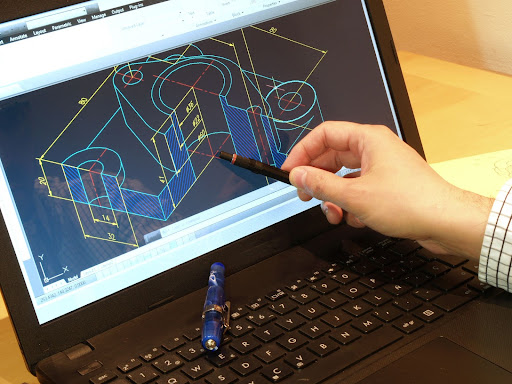
What are injection molding sink marks and what causes them?
Sink marks are shallow depressions on the surface of an injection-molded part. Because they reflect light in different directions, however, these cosmetic defects can be quite visible. Sink marks also detract from perceptions of product quality, even if they don’t affect a part’s strength or function. Sink marks are caused by thicker wall sections, and these thicker sections in parts are typically found at the bases of ribs and bosses.
In plastic injection molding, ribs run perpendicular to a wall and provide strength and support. Bosses provide channels for screws and aid in product assembly. The nominal wall is a structural element that determines the part’s overall strength and provides a mounting place for features such as latches, hinges, or threads. Molten plastic flows through the mold cavity along the nominal wall, taking the path of least resistance but still making sharp turns if necessary.
During the injection molding process, plastic is heated and then shrinks as it cools and hardens. Shrinking can occur at different rates, and plastic that’s in contact with a metal mold may cool more quickly than an interior wall. When a part’s wall sections are thick, they tend to cool more slowly and shrink more. This shrinking creates internal stress, and this stress is relieved when the surface of the plastic contracts upon itself. In turn, this creates a divot-like sink mark.
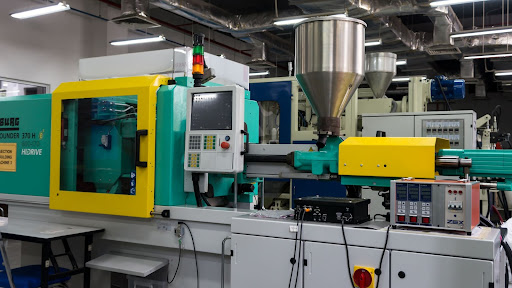
How do you prevent sink marks and voids?
Sink marks are commonplace molding defects, but there are things that part designers can do to prevent them. There are recommended practices to follow, but proper mold design and plastic processing also have key roles to play. Sometimes there are tradeoffs to consider, and Fictiv provides expert DFM feedback to support your decision-making.
Part Design
Most sink marks occur where ribs or bosses intersect with the nominal wall. By following Fictiv’s design for manufacturability (DFM) guidelines, however, you can minimize sink marks.
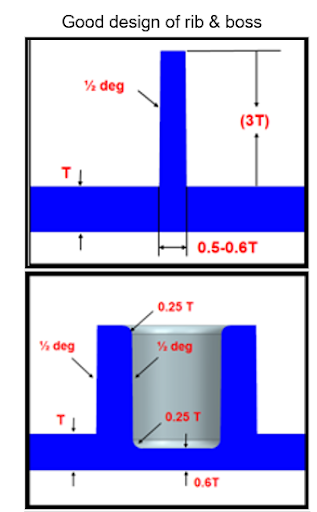
Ribs
Fictiv recommends these DFM guidelines with ribs.
- Thickness – Make the ribs 50% to 60% (0.5 to 0.6 T) as thick as the nominal wall.
- Height – Make the ribs 3 times the height of the nominal intersecting wall (3T).
- Draft – Add 0.5° draft to each side of the rib.
Bosses
Fictiv recommends these DFM guidelines with bosses.
- Thickness –Make the bottom of the boss 60% (0.6T) as thick as the nominal wall.
- Fillets – Make the fillets 25% (0.25 T) of the radius of the nominal intersecting wall.
- Draft – Add 0.5° draft to each side, both inside and outside of the boss.
Note that thinning the wall near the base of boss can also help with avoiding sink marks. However, this approach may weaken the boss to the point that it won’t perform mechanically. The loading of the boss and the plastic material used are the determining factors.
For DFM assistance, use Fictiv’s injection molding DFM tools to analyze your part design and check for wall thickness and potential sink marks — an example of the type of DFM feedback you can expect is below.
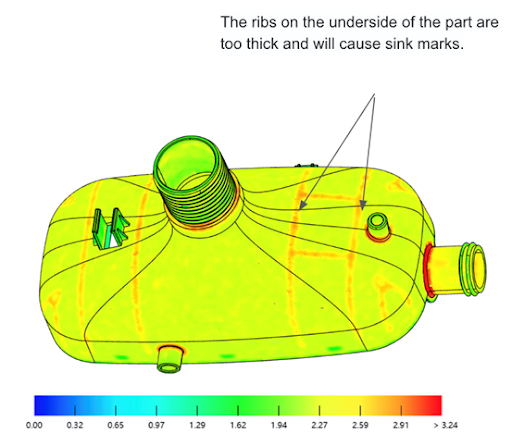
Surface Finish and Part Color
What if you can’t change your part design to prevent sink marks that are related to ribs and bosses? Then consider how part finish and color affect the appearance of cosmetic defects. Glossy surfaces and darker colors make sink marks more pronounced. Textured surfaces and lighter colors help to minimize sink mark visibility.
Sink marks can happen regardless of the surface finish and part color you choose, but Fictiv customers have successfully used lighter colors and textures to minimize the risk of more pronounced voids. If sink marks are large or numerous, however, even lighter colors or textures might not make a difference.
Mold Design
Injection molding sink marks occur even when designers follow best practices; however, there are other ways to minimize these voids. When designing an injection mold, there are three main considerations for avoiding sink marks.
- Gates
- Cooling
- Venting
Gates
Gates are openings in a mold through which molten plastic is injected. Typically, the size of a gate is based on the type of material used and the wall thickness of the part. Sometimes, however, a gate is too small for a part. This restricts the flow of molten plastic, limits the processing window, and can cause sink marks.
The number of gates also matters. If the length of material flow is especially long, a large pressure drop will occur and the mold cavity may not fill completely (aka a short shot). Injection molds that use multiple gates can limit these pressure decreases to avoid short shots and sink marks.
Cooling
Cooling lines, or cooling channels, support the uniform cooling of injection molds and the production of plastic parts that are free from defects. Whether achieved through air or water cooling, or with straight-line or conformal cooling, best practice is to make cooling as uniform as possible to avoid disparities in plastic shrinkage rates.
Sometimes, however, mold features like side actions and protruding steel make it difficult to add cooling lines everywhere you need them. These mold features also tend to become quite hot. By using metals with high thermal conductivity, such as beryllium copper, it’s easier to maintain even cooling across the mold.
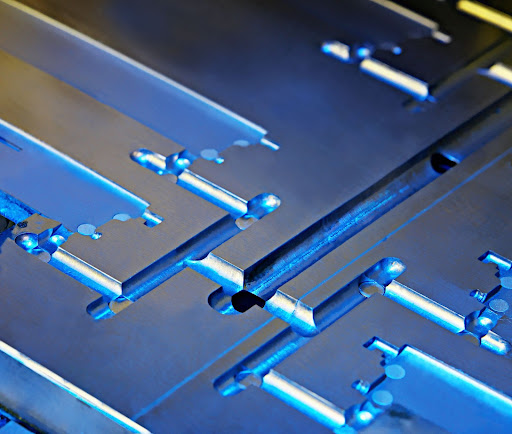
Venting
During the injection molding cycle, the mold closes, the cavity fills with air, and there’s an in-rush of plastic. As this molten material is injected, however, the pressure becomes so great that it tries to push the air out of the cavity. Poor or inadequate venting can prevent the mold cavity from filling completely or packing out, and result in sink marks because of non-uniform cooling.
Processing
Plastic processing has three key aspects that affect sink marks.
- Plastic melt temperature
- Mold temperature
- Insufficient packing, holding pressure and/or time
Plastic Melt Temperature
Injection molders need to keep a resin’s melt temperature within the material manufacturer’s recommended range. This information can be found on the resin’s datasheet and varies with the type of plastic resin. If an injection molder uses an excessive melt temperature, part cooling will take longer, affect shrinkage rates, and sink marks may occur as a result.
Mold Temperature
The temperature of the injection mold can also cause sink marks. If the mold temperature is too high, the gate might not freeze at the proper time — gate freeze isolates the molded part from the system that feeds the molten plastic so that cooling within the cavity can begin. If the gate doesn’t freeze in timely fashion, the result can be a short shot within the mold cavity.
Insufficient packaging, holding pressure and/or time
During the packing phase, pressure is adjusted and additional plastic is injected into the mold to account for backflow and material shrinkage. Then, during the holding stage, the plastic is maintained at a pressure equilibrium until gate freeze occurs. If the pack-and-hold time is too low, however, the gate might not freeze at the proper time. By completely packing out the part, an injection molder can reduce the risk of short shots and prevent the internal stresses that cause sink marks.
How do you get plastic parts without sink marks?
A great part design is important, but having the right tooling manufacturer and injection molder are critical to the success of your plastics project. Fictiv is your operating system for custom manufacturing and our technical experts are ready to help guide you through the entire injection molding process to minimize sink marks and ensure that you get quality parts.
We provide everything you need for a successful injection molding project, from DFM feedback to tooling oversight and quality assurance. To get started, create a Fictiv account and request a quote today.










